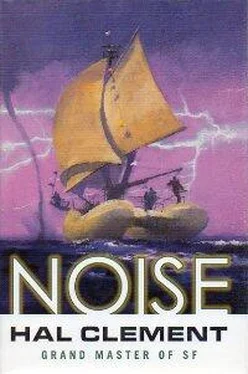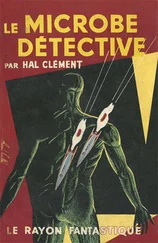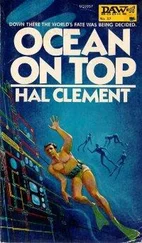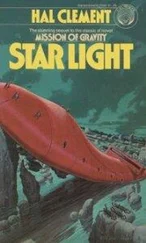Mike nodded as she finished. “All right. Remaining worry: just how sure can we be that that gangrene was confined to the hull we’ve shed?”
“I rather expected you to ask that. If you were wearing a rank badge I’d award you a couple of points. We aren’t sure at all. My guess is that when we hit that whatever-it-was a while back—you remember—we picked up the infection. We’ll never know just what the object was, but I’d guess either an egg designed to make oxygen seeds or more likely a bit of coral which had been around long enough to pick up practically anything. Viruses grow best on a solid surface, almost always. We pushed off the old hull, and I hope it sinks; but we’ll have to check the one we still have carefully and frequently from now on.”
“Something just occurred to me. If oxygen-producing pseudos aren’t capable of direct reproduction, couldn’t Malolo ’s breathing equipment get infected?”
“It could. We carry several carefully packeted seeds for replacing that gear; and another possible source of our present infection would be a minor mutation of such a seed lost from another ship.”
“Or maybe our own? Infecting from inside the hull?”
Wanaka raised an eyebrow, but showed no indignation. “That’s conceivable, and we’ll check. The seeds were, and I think still are, in the cabin, though. Thanks for the idea—I guess.”
“And if the other hull goes, too? I was very impressed by your built-in trouble preparations, but there must be a limit to what they can handle.”
“There is.” The captain offered no more details, and Hoani decided not to press the point. He himself felt that knowing the worst was no more likely to bother him than not knowing anything, but Wanaka was the captain and he, by now, was quite clear about most of the implications of that fact. That was one reason why he had hesitated earlier before asking about ’Ao’s offense.
Wanaka went on, “I’m going to sleep. Since we aren’t under way, there’s no risk of hitting anything, and if anything hits us there’s not much to be done about it at night. Sorry, but you’ll have to sleep on the deck.”
“The one outside? Is that why you kept it?”
“No. The deck—floor—in here. Your breathing gear wouldn’t last outside. I’m sorry if you don’t sleep well, but we could be sorrier if I don’t. Au ahiahi .”
Mike did not, in fact, sleep very well. He was pretty sure that the chance of being struck by anything must be considered negligible by the professionals, since they had both retired without setting up a watch, but he frequently found himself awake and listening.
There was as usual plenty to hear, much of it muffled by the cabin walls, but none of it was informative. He could only guess how much of the night he spent awake, but did not feel very capable when the other adults sat up almost simultaneously. It was dawn, though neither sun was actually up. Kaihapa had not shifted visibly, but that was no surprise; it would have implied hundreds of miles of longitudinal drift in a few hours, which would in turn have called for a most impressive sequence of storms.
The captain left the chamber briefly, and returned with a report that somewhat eased Mike’s indefinite worries.
“The old hull’s either sunk or drifted away. Keo, check what we have left for infection, then come back and eat, and we’ll set up the deep-sail and seed. Mike, how good are you at knots?”
“Hardly up to your standards, I’m afraid. But I have sailed on Earth.”
“I know. All right. When Keo gets back we’ll wake up ’Ao if she’s still asleep, and she can join Keo and me. I’m afraid you have to stand—and I do mean stand—watch on the other hull, Mike.”
Hoani realized that the “I’m afraid” part of the sentence was pure courtesy to a guest; he’d actually been given an order. He acknowledged it appropriately.
Keo was fully twenty minutes at his hull check, but finally reappeared to say that everything seemed to be clear. Mike, the captain, and the now awake ’Ao all noticed the choice of words, but no one remarked on them. They ate, checked their own and each other’s breathing equipment, and went outside. Hoani would have liked to watch what the others were doing, but controlled his curiosity, swam to the hull and climbed onto it, and promptly had his attention taken from the others.
The sea legs he had acquired earlier were now out-of-date. The hull was less than two meters wide, and responded very differently to swells and microtsunamis than the catamaran configuration did. Also, there was much less to hold on to when he stood up. By the time he was actually able to get his attention away from his own feet, the others were all under water. He hoped he could find one of them if he had anything to report.
It was the most boring morning he had spent since leaving Muamoku. It was also the most tiring; standing in the one-third gravity was not burdensome even in noise armor, but the constant change of stance needed as the hull pitched, yawed, and jumped called for equally constant muscle work. He was quite proud of himself when the others surfaced and joined him; he had not fallen overboard even once.
He yielded to temptation and watched the final operation of the others rather than their surroundings. The deck—the original one—had been moored to the stern of the hull the night before; now an additional line was strung between it and the cabin. Keo took the hull end of what had now to be considered a control line, while Wanaka worked her way onto one of the cabin’s floats and juggled with a second. Very gradually, Mike saw, a short and feeble wake appeared at the bow ends of hull, floats, and deck. Something was pulling the whole assembly, very slowly, aft, or at least keeping it from moving with the southeast-bound surface current.
A few minutes of watching and thinking provided him with a reasonable guess, and encouraged him to ask a question of Keo.
“How deep is the sea anchor, and how can you keep it there?”
The native answered without taking very much of his attention from the tow line.
“Between seventy and eighty meters. We’ve weighted it with some of the iron, and floated one corner to keep it more or less vertical, and attached the smaller sail to help handle the high corner. It was tricky arranging, and if we lose too much of the speed difference between the deep and surface currents it’s unstable. If it goes too far down the whole vertical line of floats will collapse under the pressure and let the stuff sink, and we’ll have to set it up all over again. As long as we’re being pulled hard enough one way by the surface current and the other by the deeper one, the difference should tend to keep the whole thing up.”
“Why the current difference? Though I think I can guess.”
“Surface current is diluted water from the equatorial rain belt. It gradually picks up salt as it flows. The deeper one is saltier stuff returning toward the equator. That’s a gross over-simplification, by the way.”
“I thought it might be. How long will this stage take us?”
“To grow the new hull? Half a year, give or take quite a bit. Depends on temperature and a little bit on ion content of the water. To get to Muamoku afterward? Probably less, unless the captain decides to hunt up more cargo first.”
Mike found himself out of questions. Both of Keo’s answers needed digesting.
The following weeks ought to have been boring for a person who had never needed much more than an hour to get from one place to another on the same planet, but they weren’t.
Hoani was a perfectly capable sailor as long as he could see the sails. Wanaka had checked that very early, though she had never left him alone on watch while all the rest were sleeping. The sails, however, were now under water and quite out of sight. Their orientation with the currents they were supposed to be using could be told only from the length of cordage paid out to the various corners, and their depths from the angle at which these lines entered the water. This last was very hard indeed to observe, since they passed through rings on the sides and corners of the deck, which was now floating level with the surface except as waves lifted one corner or another. Two lines, on the nearest deck angles, led to the deepest sail corners, which were held apart by a length of the former mast; not all of this had been used to improvise “outrigger” booms. The peak of the larger sail itself was attached to the center of a shorter such length, whose ends were controlled by lines through rings on the farther corners of the deck. These ends kept separated the longer side of the small sail, while a fifth ring on the deck, midway between the last two, guided the line attached to its apex.
Читать дальше












